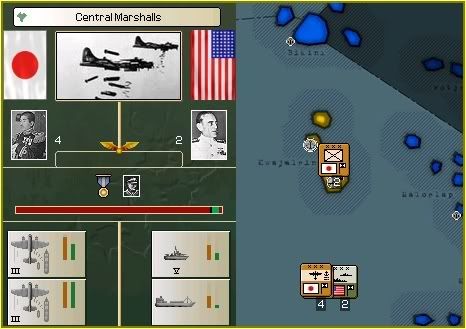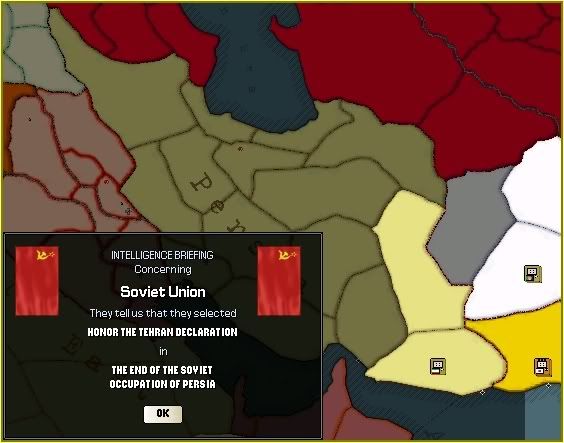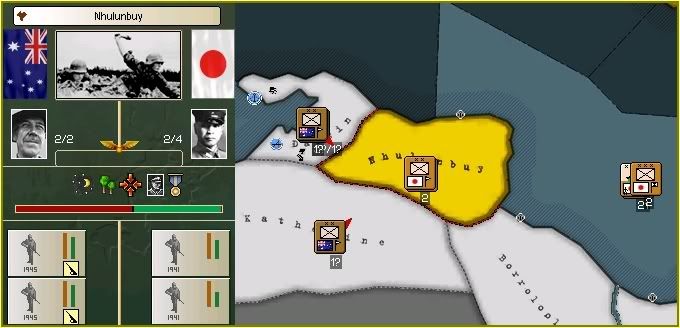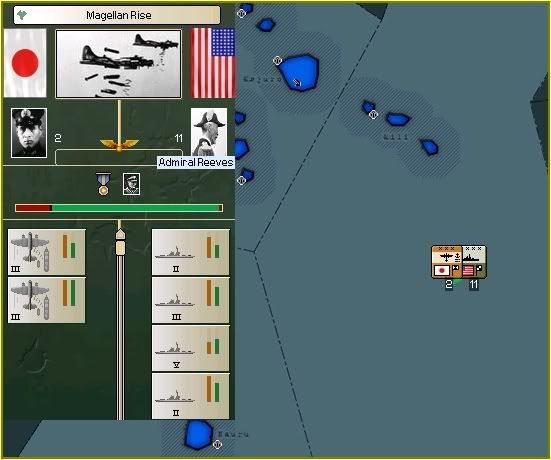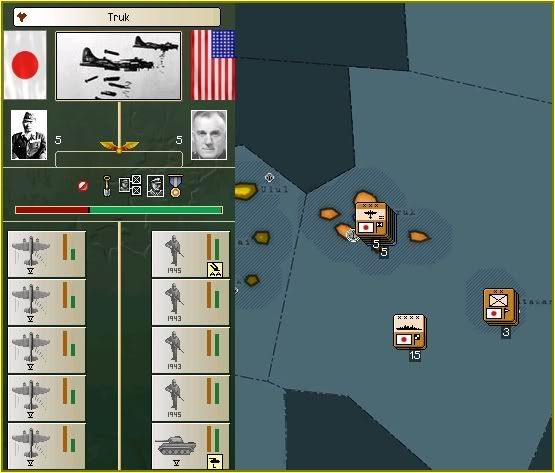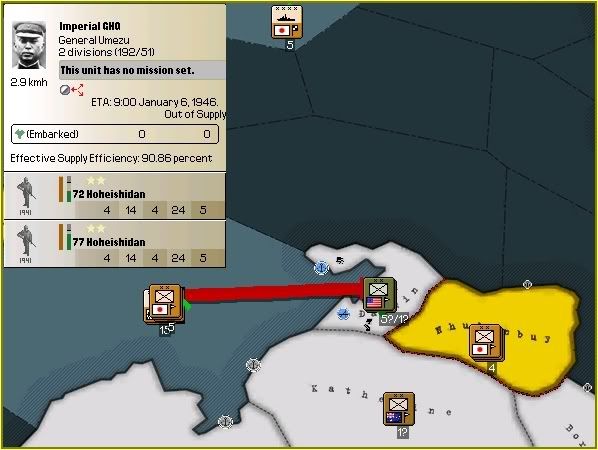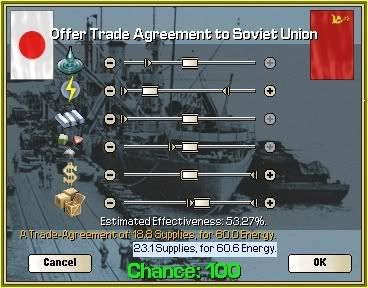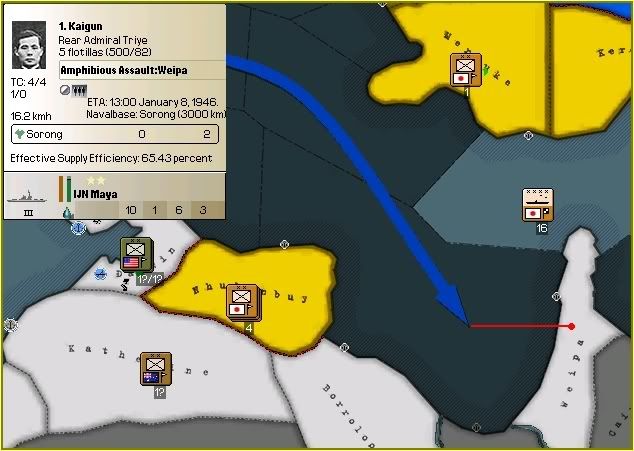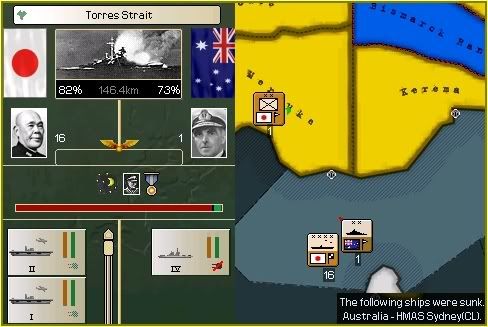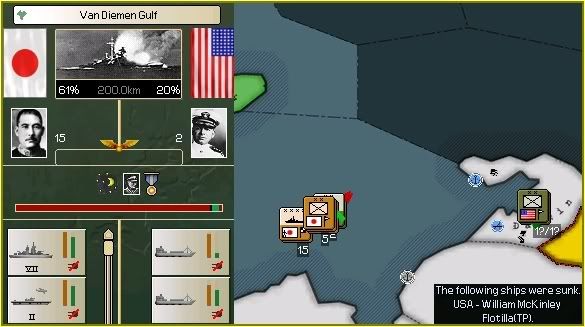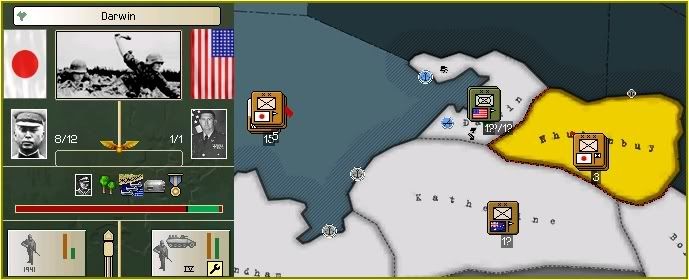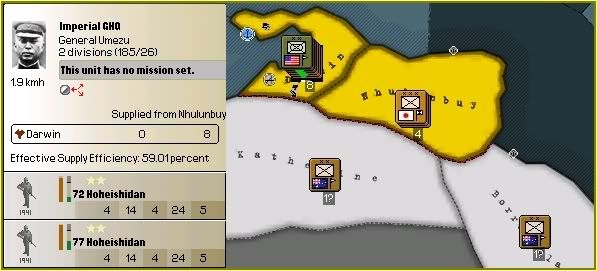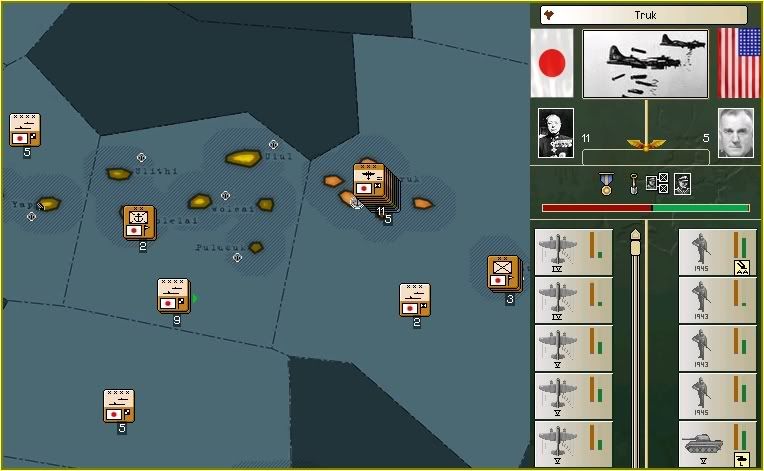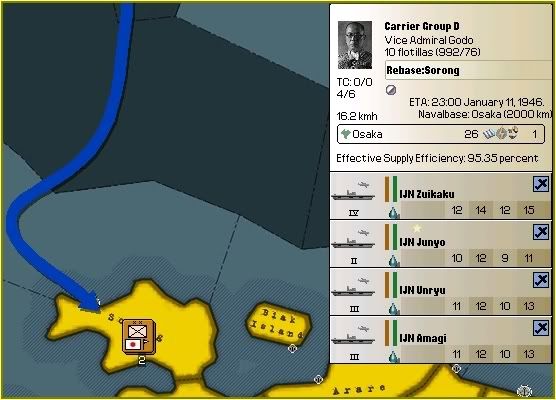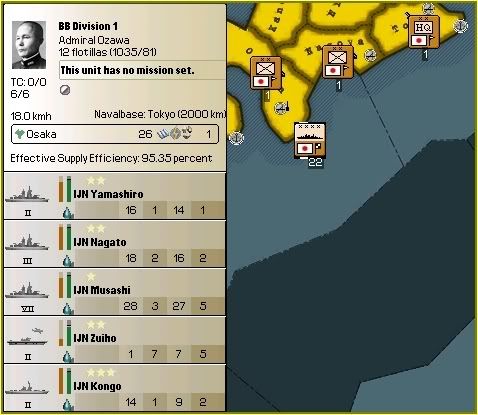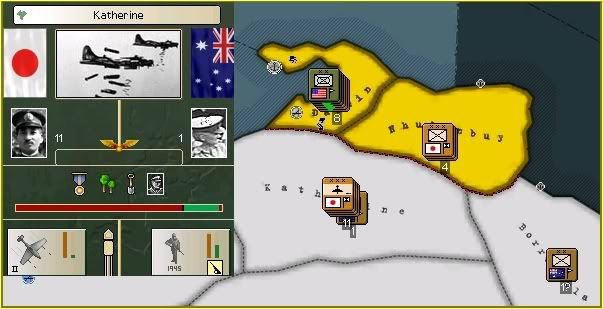Operation Obsolete
1
1900 January 1st 1946.
BB Division 1 Flagship. IJN Yamashiro, Osaka.
Ozawa had been informed of the Emperor's wishes to cripple the United States Navy as much as possible. How much more could he really do, by any estimate it was already approaching that state.
Ichimaru and Genda were still patrolling the Marshall Islands and caught a small American fleet in the Central Marshalls. There was a possibility that this fleet was trying to reinforce the islands still controlled by the United States but neither ship would survive long enough to allow any such action.
0000 January 2nd 1946.
Diplomatic Offices. Tokyo, Japan.
The Soviet Ambassador had asked for a meeting with Mamoru who was only to happy to be accomodating. Soviet energy was fairly important and he wished to remain as friendly as possible.
"Good morning Minister Mamoru." the Soviet Ambassador greeted him with a smile.
So it was to be a friendly meeting then, Mamoru surmised as he returned the greeting. "How can I help you today Ambassador"
"Actually I came for some tea as we seem to have run out at our embassy."
"Of course Ambassador." Mamoru replied. He could wait for the real reason for the visit if he had to.
Having seated himself,and now armed with a nice cup of Indian tea, the Soviet Ambassador got down to his real reason for visiting.
"As you may or may not be aware Minister Mamoru the Soviet Union has an accord with the British regarding Persia."
"I recall something about that Ambassador." Mamoru replied.
"In his great wisdom Comrade Stalin has agreed to honour that accord and return Soviet controlled Persia to the British. I realise that this may not be something you would like as it strengthens one of your enemies a little but the Soviet Union is a peaceful Country and wishes to be seen as such."
"I am sure we can manage Ambassador. Thank you for appraising me of the situation so swiftly." Mamoru replied as the conversation drifted into non-political small talk.
The change to the boundaries of Persia made little direct difference to Japan and could even aid them in getting closer to the Soviet border in the future.
1000 January 2nd 1946.
BB Division 1 Flagship. IJN Yamashiro, Osaka.
The first invasion of Australia had gone according to plan and two of the four Japanese divisions making this assault had arrived in Nhulunbuy.
Lt. General Suzuki was counter attacked immediately by the local forces and would have been in some small trouble had two more divisions not arrived within two hours. Their arrival swiftly ended the counter attack and had even weakened the defences of Darwin. These defences would be tested as soon as Suzuki and his troops had re-organised from their amphibious assault.
Genda and his Naval bombers had encountered a large Surface Action Group to the south east of the Marshalls which contained four Heavy Cruisers as well as numerous escorting ships. Reeves was currently heading towards the Carolines but would reverse course after being spotted. He would be followed by both Ichimaru and Genda as he transitted the Pacific.
By 2000 hours on January 2nd the infrastructure of both Truk and Ngulu had been reduced to close to 5% and the Tactical bombers switched to depleting the defenders organisation on Truk. Japanese troops were still recovering from previous assaults and still required a few days rest before committing to another attack. Ozawa would keep the enemy guessing his next target by leaving the three infantry on Yap until they were needed for the assault of Truk.
At 2300 hours on January 3rd General Umezu began the amphibious assault of Darwin with support from three of the four divisions in Nhulunbuy. A direct assault would have been futile without the flanking attack.
Victory was achieved just before dusk on January 4th and Umezu would finish unloading in Darwin on January 6th at 0900 hours unless the landing was interupted.
Allied bombers had begun to target Kim and his single defensive division on Palau. Two Columbian Tactical bomber squadrons and four American Strategic bomber squadrons were harassing the defenders. Unless there was to be an invasion they were wasting their bombs against the heavily entrenched Japanese troops on the island.
0000 January 5th 1946.
Diplomatic Offices. Tokyo, Japan.
Relations with the Soviets were as good as they could get without an Alliance of some sort and Mamoru summoned the Ambassador for some more trade negotiations.
Another alteration to an existing agreement would prove beneficial to Japan as less supplies would be traded for a similar amount of energy.
1300 January 5th 1946.
BB Division 1 Flagship. IJN Yamashiro, Osaka.
Ozawa would increase the pressure on Australia and also sow some confusion as he ordered another invasion in a slightly different area.
Triye embarked the remainder of the troops in Sorong and headed towards Weipa to invade behind the Australian lines as they reacted to the initial assaults around Darwin.


